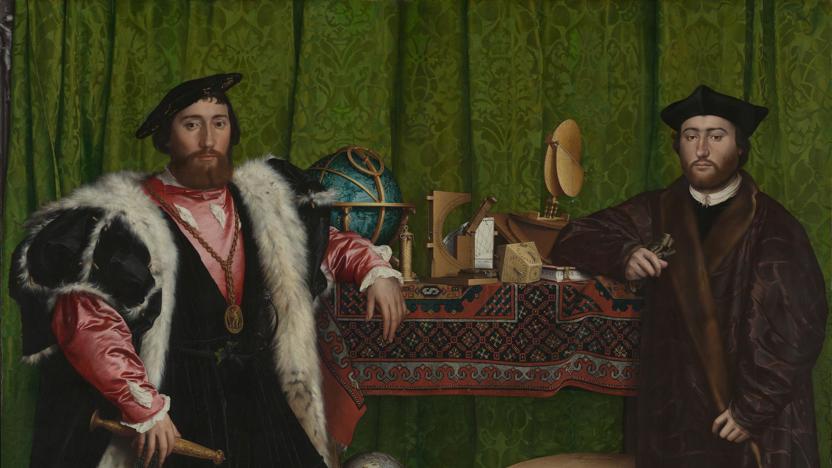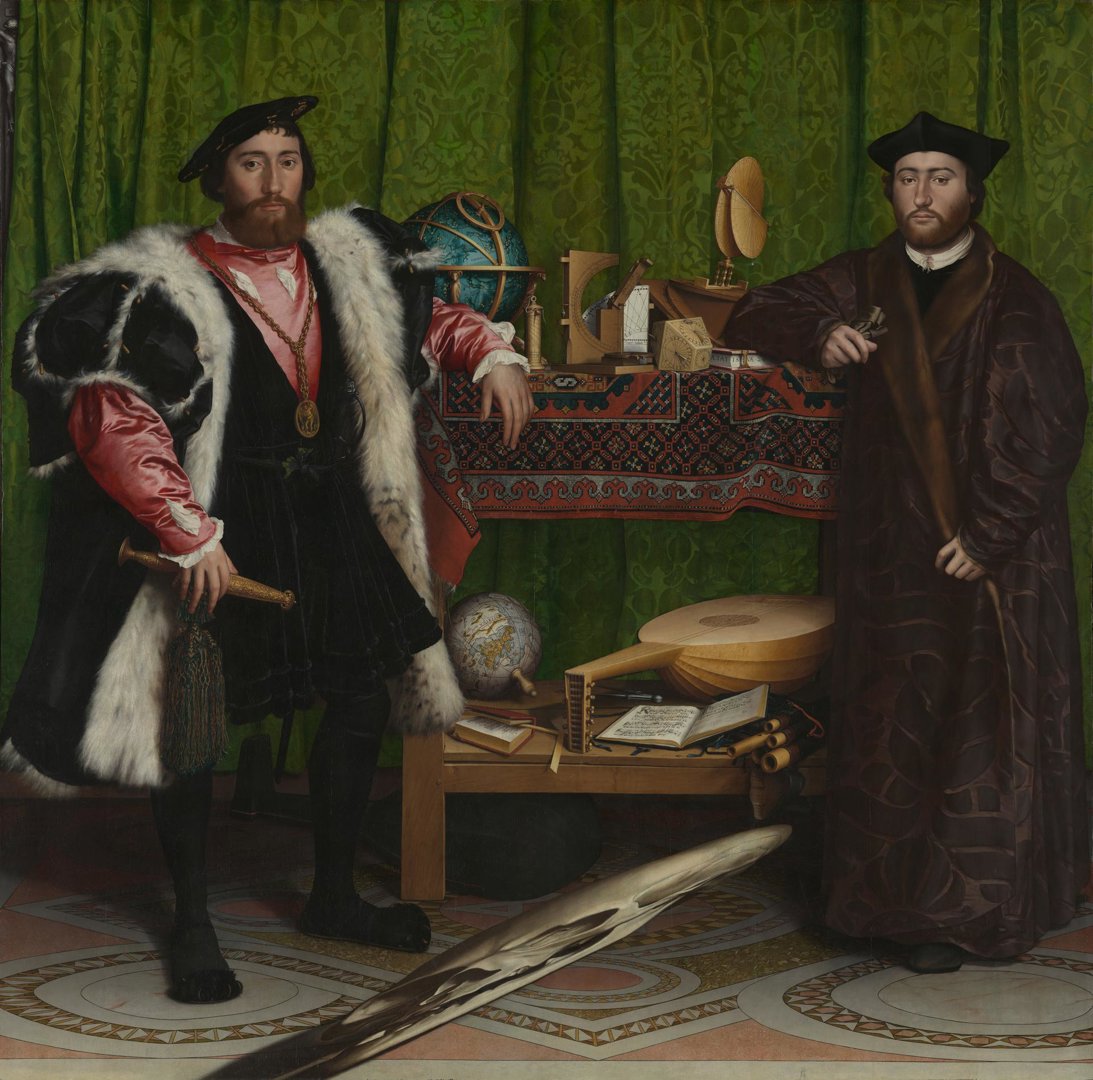Hans Holbein the Younger's 'The Ambassadors'
Audio description
This is an audio description of 'The Ambassadors' by the German artist Hans Holbein the Younger, painted in 1533. It is large, just over 2 metres square, oil on oak in a dark wooden frame.
The painting is a full-length double portrait celebrating the friendship of two young Ambassadors to the King of France - Jean de D’inteville on the left, and his friend, the Bishop Georges de Selve on the right. The richly dressed friends face us, posed on either side of a chest-height, two-tiered, wooden shelf, which holds an array of interesting objects. Their inside arms lean on the top shelf, as though it’s a mantlepiece. A heavy green damask curtain is behind them, and the floor, patterned pink and white geometric marble tiles.
Both men have brown hair and short beards. On the left, Jean de D’inteville wears a flat, black-velvet hat, black tights, and a knee-lenth tunic, over a pink satin shirt. Over this he has a heavy, black, cape, with enormous, puffed, elbow-length sleeves. It’s lined with white lynx fur and imparts a sense of volume and importance, as do his broad, black, ‘bun-toed’ shoes, as they were called at the time, only legally able to be worn by nobles. D’inteville has a chunky golden chain with an oval medallion around his neck, which indicates he belongs to the knighthood of the order of Saint Michael. His hand rests on a golden scabbard at his hip.
George de Selve on the right is less exuberantly dressed, though his floor-length, damask, brown gown, still has a luxurious fur lining. His black hat has three peaks, a little like a small tricorn. He holds a pair of gloves in his right hand, his elbow resting upon a book on the top shelf. There are Latin inscriptions on this book, and on D’inteville’s golden scabbard. These reveal that the men are 25 and 29 years old respectively.
On the top shelf between them, objects relating to heavenly realms are arranged on a red Turkish carpet. From left to right, is a blue globe mapping the position of the stars, a selection of sundials, and a circular brass disc on a stand known as a torquetum. These instruments were used to measure time, altitude and the positions of celestial bodies. They were made by Henry VIII’s royal astronomer, Nicholas Kratzer and were extremely precious.
The objects on the bottom shelf pertain to more earthly pursuits. Another globe shows France, and the hamlet of Polisy, where D’inteville had his chateau, where this painting would have hung. A hymn book lies next to an arithmetic book, propped open by a set square. Behind them is a pair of metal dividers, under the neck of a wooden lute. In front of this, the ends of a set of four wooden flutes poke out from a soft leather case.
The objects may allude to interests and accomplishments, but they also suggest division and discord. One string on the lute is broken. The flute case has an empty pocket – the fifth flute is missing, so they cannot be played in harmony. This portrait was painted at a time of religious upheaval in Europe, when Henry VIII was on the brink of breaking with the Roman Catholic Church, partly in order to divorce and remarry. This was worrying for King Francis I of France, who sent D’inteville to attend the King’s wedding to Anne Boleyn, and report back. In a subtle reference to the Church, the green curtain behind the Ambassadors is pulled back a little in the top left corner, revealing part of a silver crucifix hanging on the wall behind it.
The unexpected addition of a distorted, white, smeary shape, stretches incongruously across the bottom of the painting between the mens’ feet, suggesting that there is more to the painting. This reveals itself to be a skull, but only when viewed from close to the right of the painting, an optical illusory effect known as anamorphis. The skull – as well as advertising Holbein’s skill, is a ‘momento mori’ – from the latin for a reminder that one must die.


